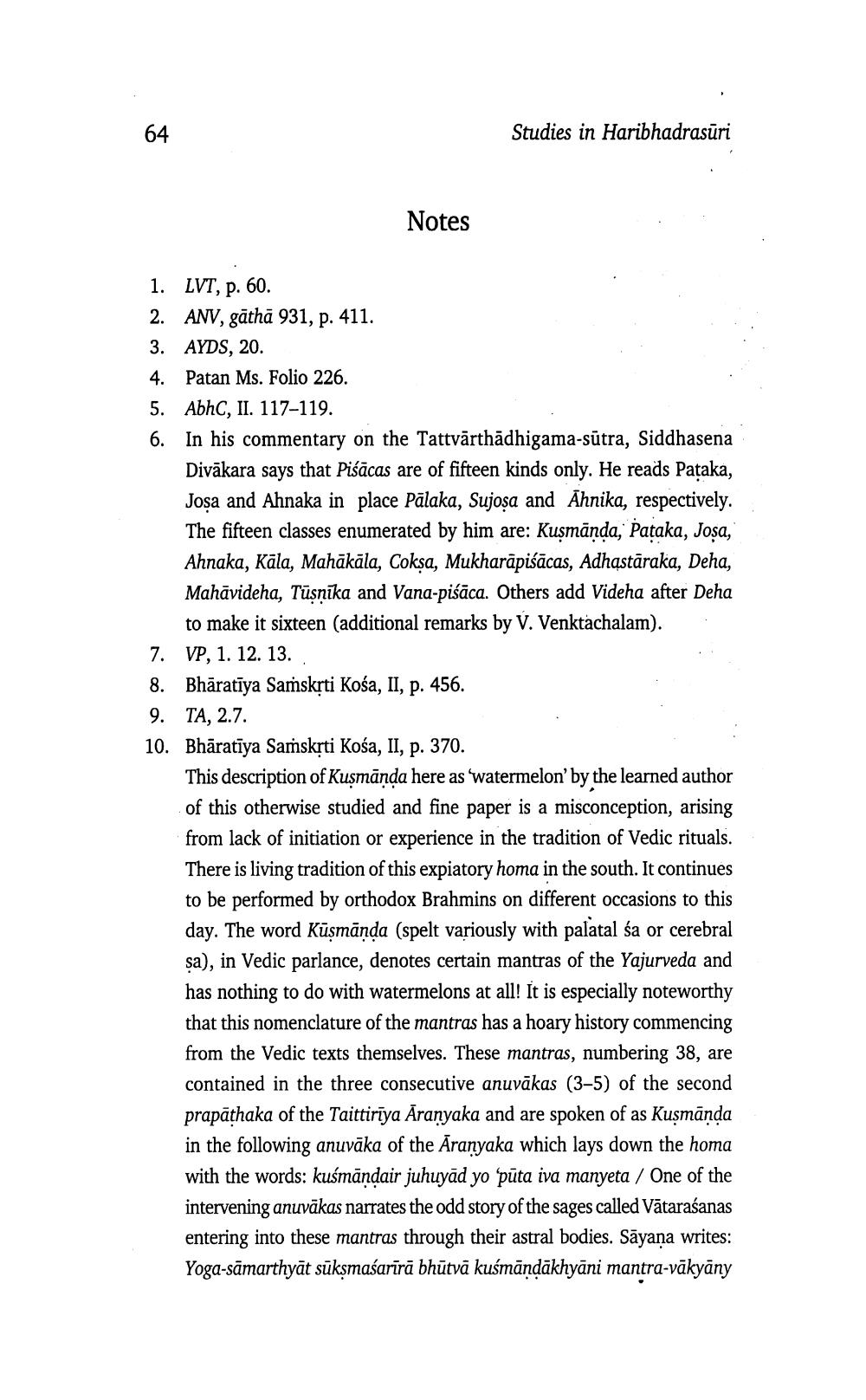________________
64
Studies in Haribhadrasūri
Notes
1. LVT, p. 60. 2. ANV, gāthā 931, p. 411. 3. AYDS, 20. 4. Patan Ms. Folio 226. 5. AbhC, II. 117–119. 6. In his commentary on the Tattvārthādhigama-sūtra, Siddhasena
Divākara says that Piśācas are of fifteen kinds only. He reads Pataka, Joşa and Ahnaka in place Pālaka, Sujosa and Āhnika, respectively. The fifteen classes enumerated by him are: Kuşmānda, Pataka, Joșa, Ahnaka, Kāla, Mahākāla, Coksa, Mukharāpiśācas, Adhąstāraka, Deha, Mahāvideha, Tūsnīka and Vana-piśāca. Others add Videha after Deha
to make it sixteen (additional remarks by V. Venktachalam). 7. VP, 1. 12. 13. 8. Bhāratīya Samskrti Kośa, II, p. 456. 9. TA, 2.7. 10. Bhāratīya Samsksti Kośa, II, p. 370.
This description of Kuşmānda here as watermelon' by the learned author of this otherwise studied and fine paper is a misconception, arising from lack of initiation or experience in the tradition of Vedic rituals. There is living tradition of this expiatory homa in the south. It continues to be performed by orthodox Brahmins on different occasions to this day. The word Kūşmāņda (spelt variously with palatal śa or cerebral sa), in Vedic parlance, denotes certain mantras of the Yajurveda and has nothing to do with watermelons at all! It is especially noteworthy that this nomenclature of the mantras has a hoary history commencing from the Vedic texts themselves. These mantras, numbering 38, are contained in the three consecutive anuvākas (3-5) of the second prapāthaka of the Taittirīga Āranyaka and are spoken of as Kuşmānda in the following anuvāka of the Āranyaka which lays down the homa with the words: kuśmāndair juhuyād yo pūta iva manyeta / One of the intervening anuvākas narrates the odd story of the sages called Vātaraśanas entering into these mantras through their astral bodies. Sāyana writes: Yoga-sāmarthyāt sūkşmaśarīrā bhūtvā kuśmāņdākhyāni mantra-vākyāny




